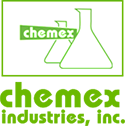Is there a difference between "green" and "biobased"?
We’ve evolved from an extensive period, utilizing chlorinated solvents to strip away grease, tar, fats, grime etc. from surfaces. I can recall maintenance personnel, washing their hands in the parts dip tank. No wonder there was a discoloration of their skin, the area of their arm, from their biceps down through their fingers, that were submerged in the solvent.
These solvents contributed to poor and dangerous indoor air quality as well as damaging the ozone level. Needless to say it was harmful to skin, respiratory (inhalation toxicity) and to many surfaces.
Our “Shades of Green” Report details the confusion end users face while trying to comply with the mandated legislation, related to green cleaning. This portion of our report will explain “Green” and “Biobased”.
Understanding the term “GREEN”:
A green chemical is a product that has a lesser or reduced impact on human health and the environment when compared with competing products that serve the same purpose. Be aware of the VOC's (volatile organic compounds) contained in the product. The EPA regulates VOC's in the air, water and land. OSHA regulates VOC exposure in the workplace. Volatile organic compounds that are considered hazardous material, would be regulated by the Pipeline and Hazardous Materials Safety Administration while being transported. In California, the South Coast Air Quality Management District (SCAQMD) provides a list of CAS (Clean Air Solvents), by manufacturer. Chemex Industries, Inc. is proud to be included in this listing of safe products, based on low our levels of VOC's.
As outlined in Part 1 of this communication, third party certifications, such as DfE and Green Seal, test and evaluate skin and inhalation toxicity levles for product use.
Understanding the term "BIOBASED":
The term ‘‘biobased product’’ means a product determined by the Secretary of Agriculture to be a commercial or industrial product (other than food or feed) that is composed, in whole or in significant part, of biological products or renewable domestic agricultural materials (including plant, animal, and marine materials) or forestry materials OR an intermediate feedstock. Some examples of agricultural resources that make up many biobased products include: soybeans, corn, kenaf, flax, jute, and numerous other types of crops that are harvested. Current applications of these agricultural resources create products such as ethanol (corn-based), soy candles, soy-based lubricants, kenaf office paper, and bioplastics to name a few. These ingredients are environmentally safer, increase rural economic development, foster domestic production of resources and reduce U.S. dependency on imported products, such as foreign oil. This helps alleviate the consumption of resources that harm the environment in terms of biodegrability, toxicity, and pollution.
Please recognize that biobased products are benficial because they use renewable resources in place of the limited supply of oil. BUT, biobased is not necessarily green. Unlike green chemicals, biobased chemicals do not currently qualify for LEED certification points.
The USDA Bio Preferred Program program is in place to promote the increased purchase and use of biobased products.
Not all green chemicals are biobased, nor are all biobased chemicals considered green. But there is an ovelap between the two. Choosing a product that meets both criteria sound like your best bet.
For more help and for reference materials, please contact Barry Greenberg, at Chemex Industries, Inc.
 Eco Absorb Meets NSF International Certification - OMRI Listed (Organic Materials Review Institute)
Eco Absorb Meets NSF International Certification - OMRI Listed (Organic Materials Review Institute)

